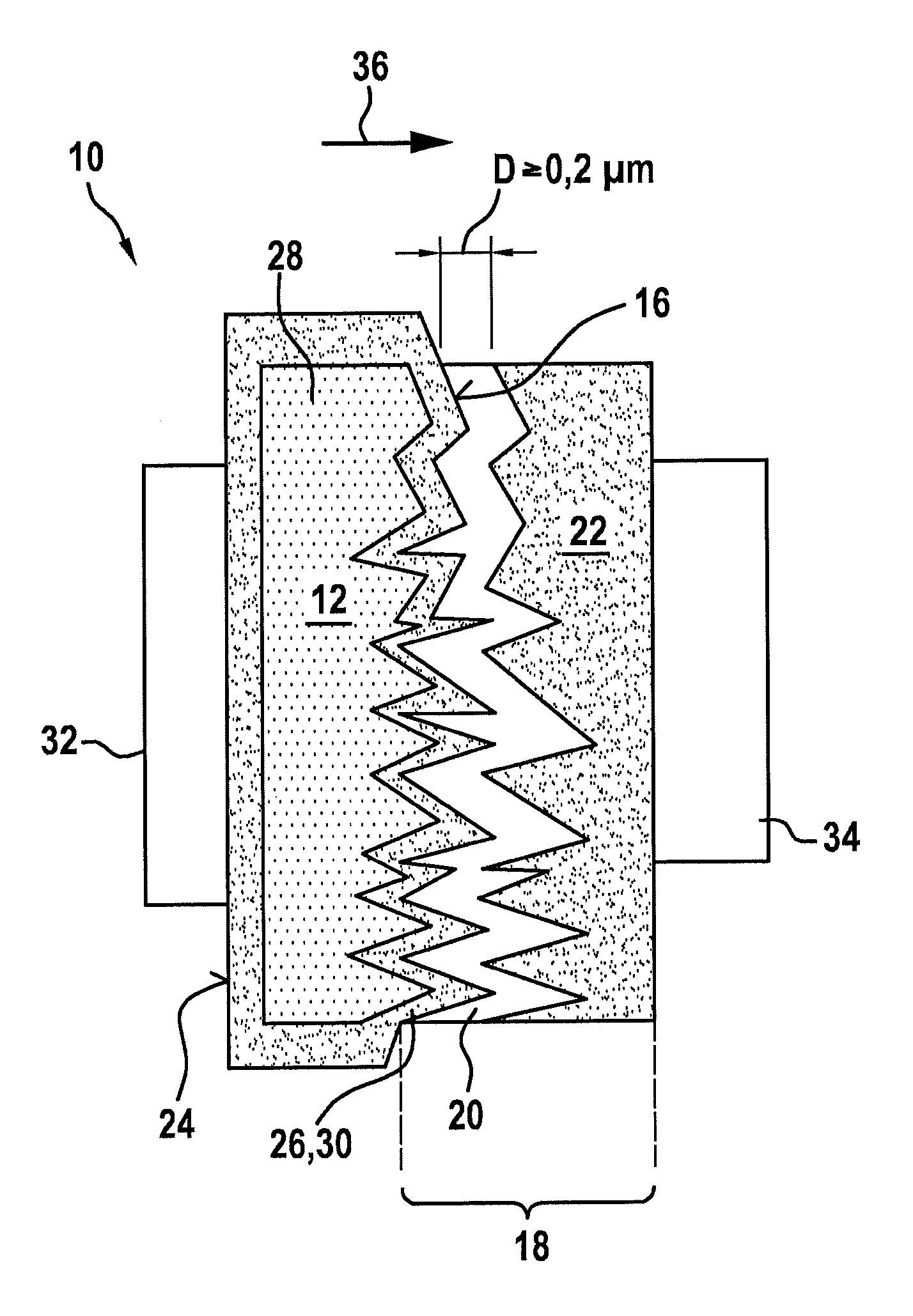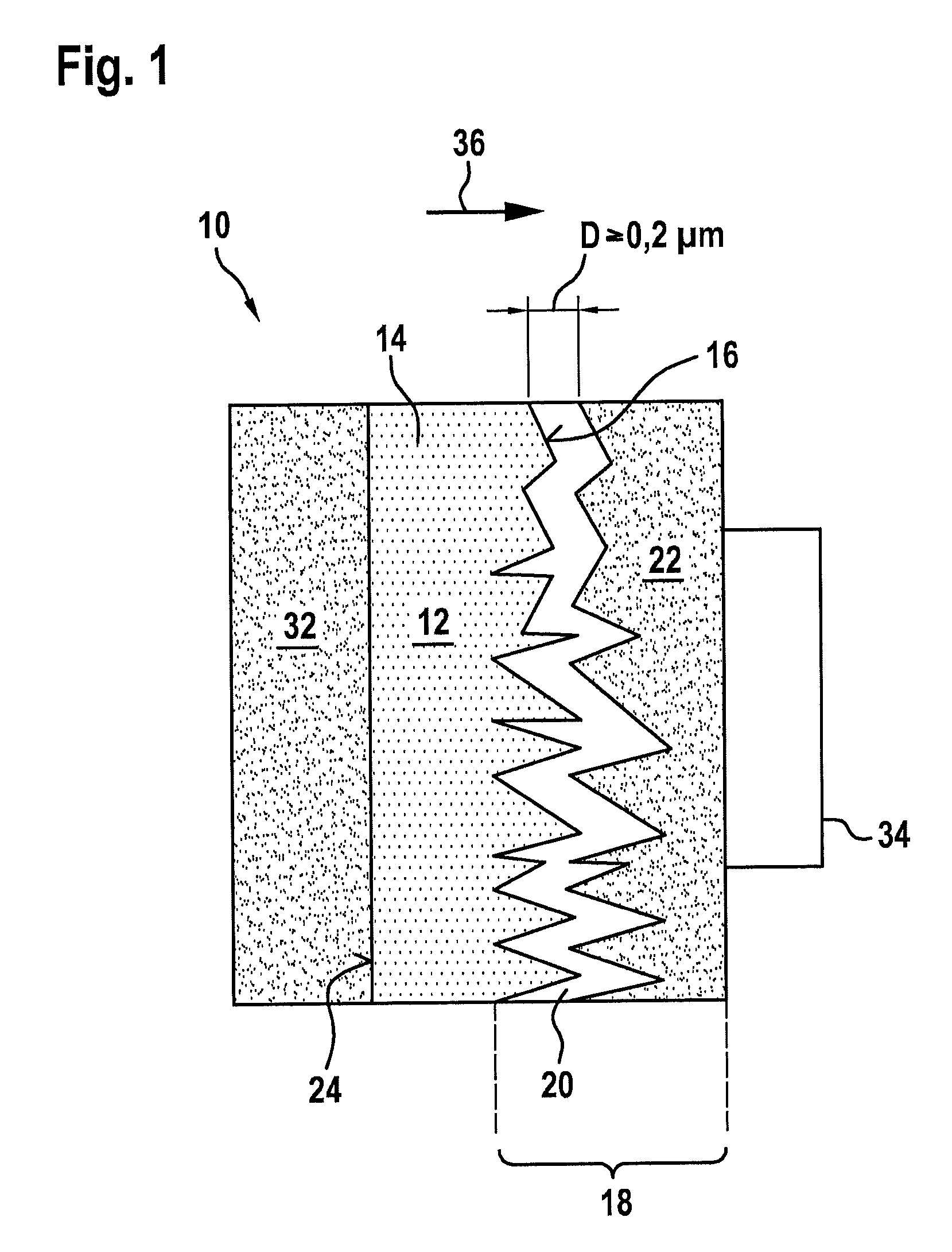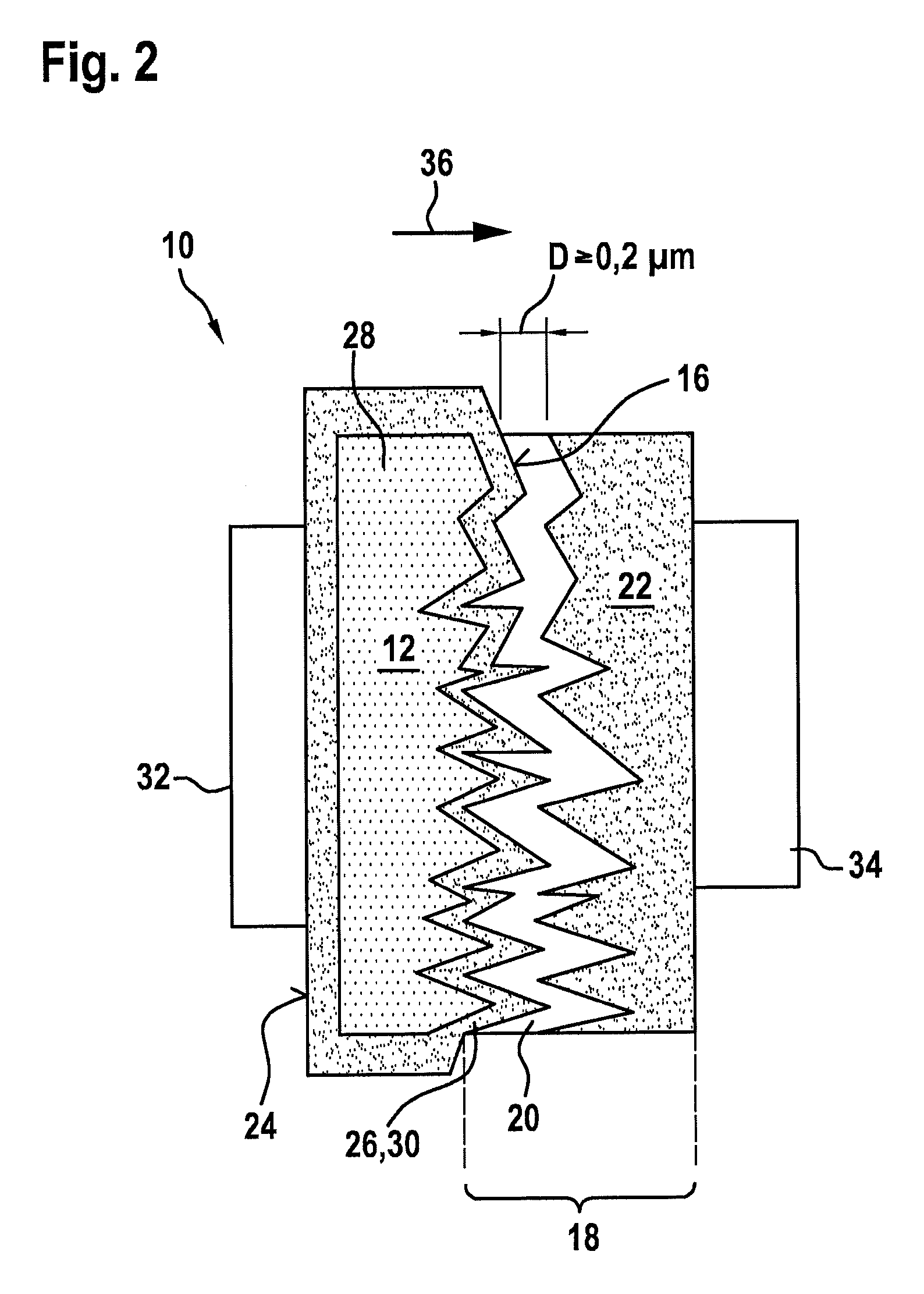Method for manufacturing a capacitive storage element, storage element and its use
a technology of capacitive storage elements and manufacturing methods, applied in the direction of capacitors, fixed capacitor details, fixed capacitors, etc., can solve the problems of difficult to achieve thickness which ensures adequate dielectric strength, the design of titanate layers as layers, and the current cost of lithium ion batteries approximately 1,000 euro per kwh
- Summary
- Abstract
- Description
- Claims
- Application Information
AI Technical Summary
Benefits of technology
Problems solved by technology
Method used
Image
Examples
Embodiment Construction
[0025]FIG. 1 shows a capacitive storage element 10 having a porous substrate 12 and a layer system 18 on one side 16 of porous substrate 12. Porous substrate 12 of FIG. 1 is designed as a conductive substrate 14. Such a conductive porous substrate 14 is an activated carbon body, for example. Layer system 18 on one side 16 of substrate 12 is a layer system 18 having a layer sequence of a closed dielectric titanate layer 20 and an electrically conductive layer 22. The porous nature of substrate 12 is shown in the schematic view of FIGS. 1 and 2 only on the one side 16 facing dielectric titanate layer 20 and electrically conductive layer 22 but is also present in principle on the other side 24 of substrate 12 opposite the one side 16.
[0026]FIG. 2 also shows a capacitive storage element 10 having a porous substrate 12 and a layer system 18 on one side 16 of porous substrate 12. However, porous substrate 12 of FIG. 2 is completely covered by a conductive surface layer 26 and is thus a su...
PUM
| Property | Measurement | Unit |
|---|---|---|
| thickness | aaaaa | aaaaa |
| thickness | aaaaa | aaaaa |
| weight | aaaaa | aaaaa |
Abstract
Description
Claims
Application Information
 Login to View More
Login to View More - R&D
- Intellectual Property
- Life Sciences
- Materials
- Tech Scout
- Unparalleled Data Quality
- Higher Quality Content
- 60% Fewer Hallucinations
Browse by: Latest US Patents, China's latest patents, Technical Efficacy Thesaurus, Application Domain, Technology Topic, Popular Technical Reports.
© 2025 PatSnap. All rights reserved.Legal|Privacy policy|Modern Slavery Act Transparency Statement|Sitemap|About US| Contact US: help@patsnap.com



